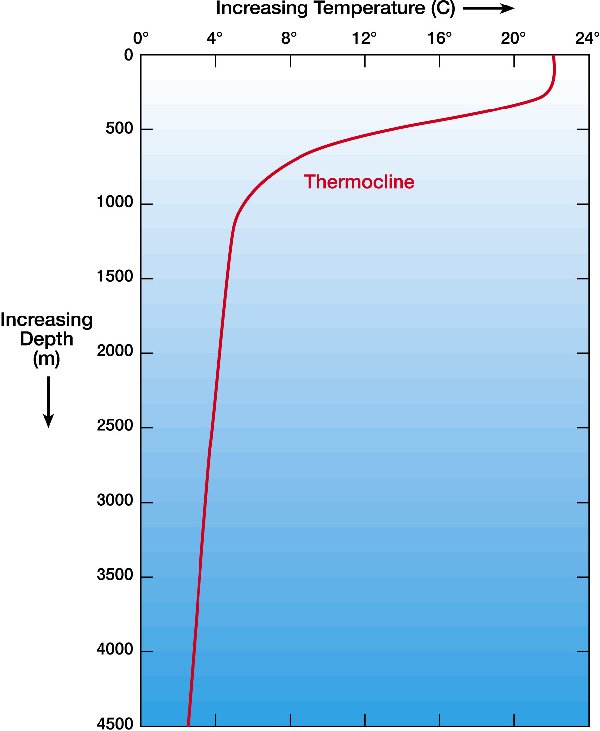One of the bigger jokes in climate science now is that the missing heat is hiding at the bottom of the sea, and someday will surface again and restart global warming.
But the reality is that the oceans get colder with depth, so any large scale ocean turnover will cool the planet. This is what happens during La Nina. The planet warms during El Nino, due to a lack of ocean turnover.



But it will cool it a bit less. Welcome to Catastrophic Anthropogenic Less Cooling (CALC).
😀 that is funny and explains everything.
Alarmists and climate scientists can’t do CALC!
Who knew?
That’s a good one, Nick. 🙂 Better trademark that one….
My prediction:
The next alarmist “evidence” will be Thermocline Shift!
http://researchnews.osu.edu/archive/thermocline.htm
Damn. They beat me to it. Since tampering with global temperature data is so easy, adjusting the thermocline data will be even easier. What a bunch of tossers.
Climate Science – chain of evidence
1. CAGW is a fact.
2. CO2 causes everything to happen
3. Find something that happens and say it is caused by Glowbull Worming
4. Cause panic
5. Ask for mo money.
I can understand it would vary by surface temperatures, but it seems to me the cooling would occur at a depth less than depicted in the Thermocline chart. Joe Nova had this chart:
http://jonova.s3.amazonaws.com/graphs/ocean/pacific-ocean-temperature.gif
I should think you would notice within 100 ft at warm locations.
Without strong solar radiations the world would start to cool down quickly and systematically.
2008-09 is a typical period (without strong radiations, I mean).
The more we approach the end of the present solar cycle the more we’ll have systematic cooling as we had then.
The heat liberated by the El Nino of 2009-10 was a residual of previous warming periods, but if we’re really entering a new grand minimum (as I do believe we are) then large releases of heat (like in 2009-10) will become more and more a “thing of the past” (at least for a few decades).
OTOH, more La Nina’s means accelerated cooling, as it’s happening now already, although the rate is still small.
I have been following the ocean temperatures for a couple of years and I have noticed a steady decline of the anomalies, especially in the SH,
http://weather.unisys.com/surface/sst_anom.gif
We’re in a transition period, when some residual heat still exists (mainly in the oceans) due to previous warming periods, but I think in no more than 1-to-2 years the remaining heat will be exhausted and the cooling will accelerate noticeably.
The increasing ice in both polar regions is already an indication of this trend, IMO.